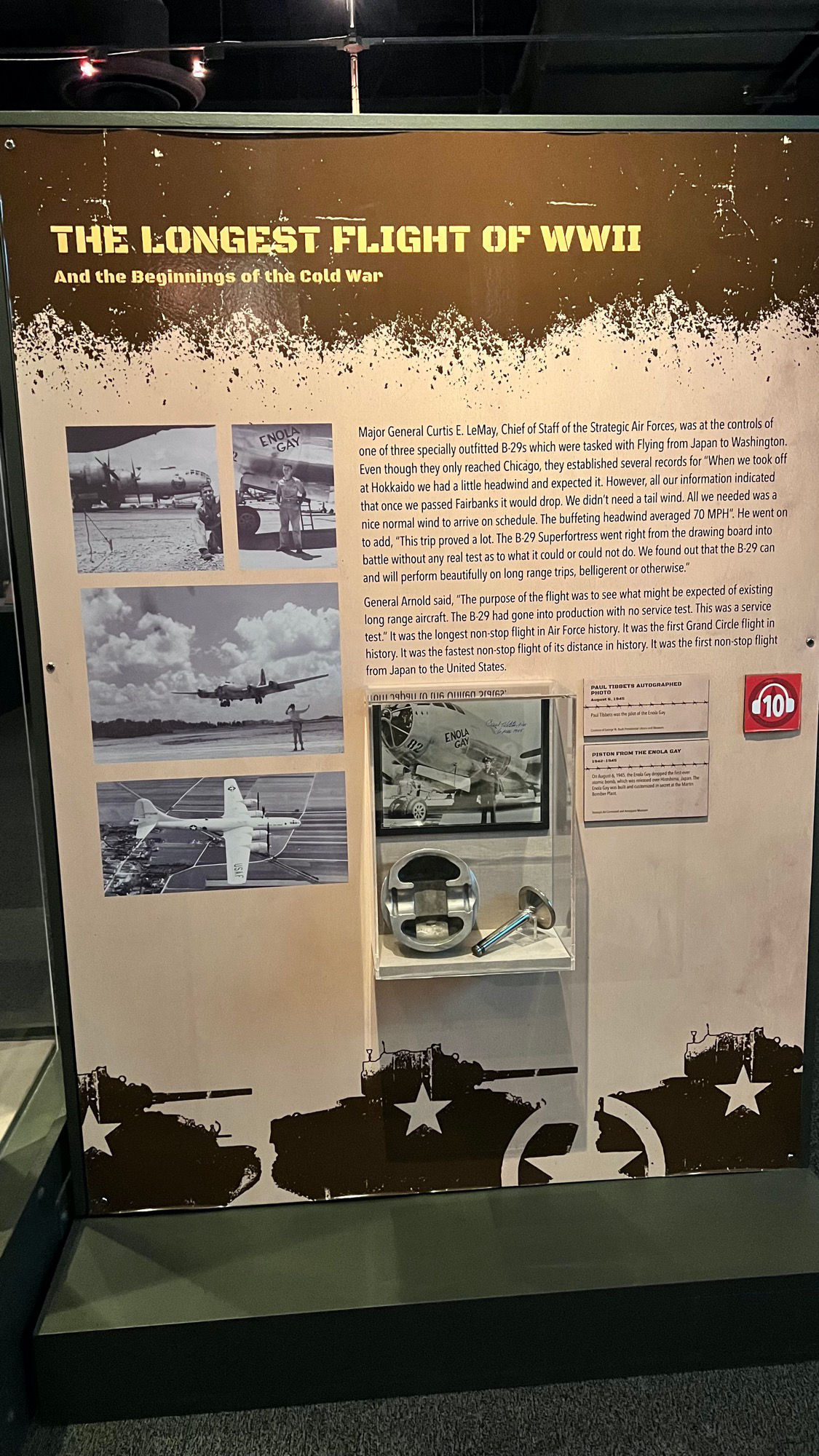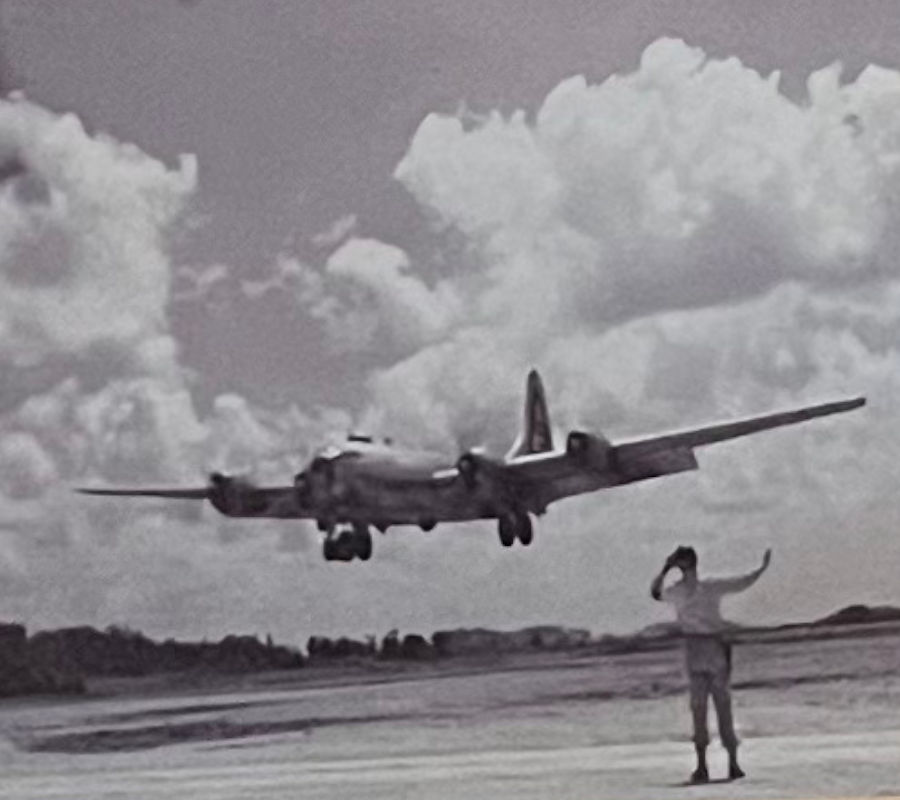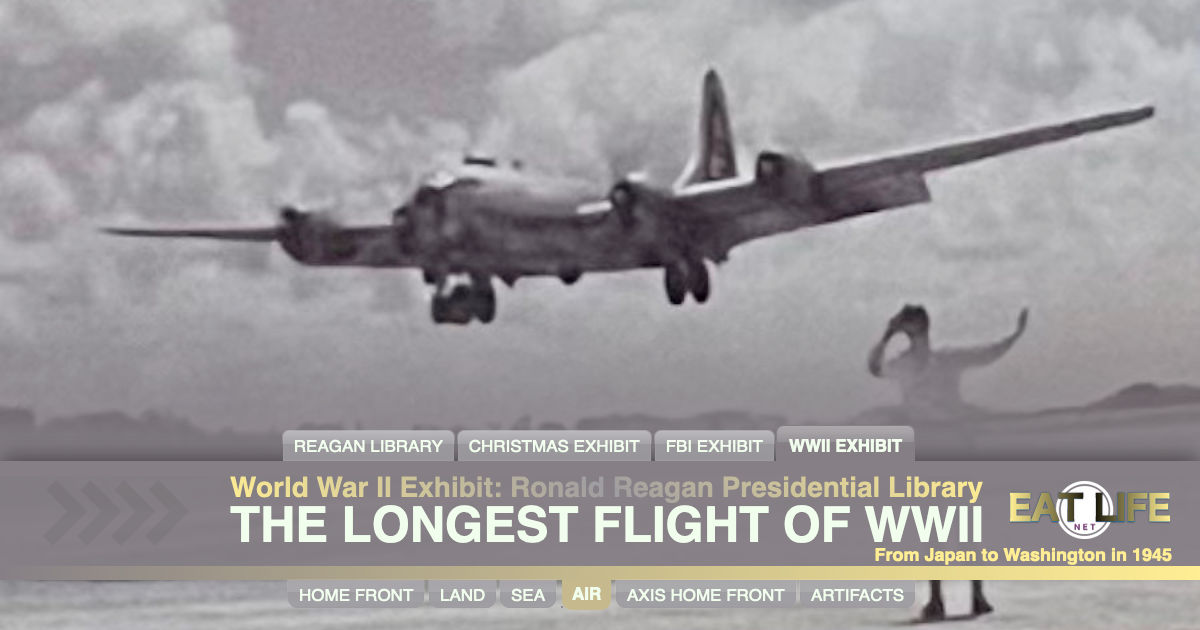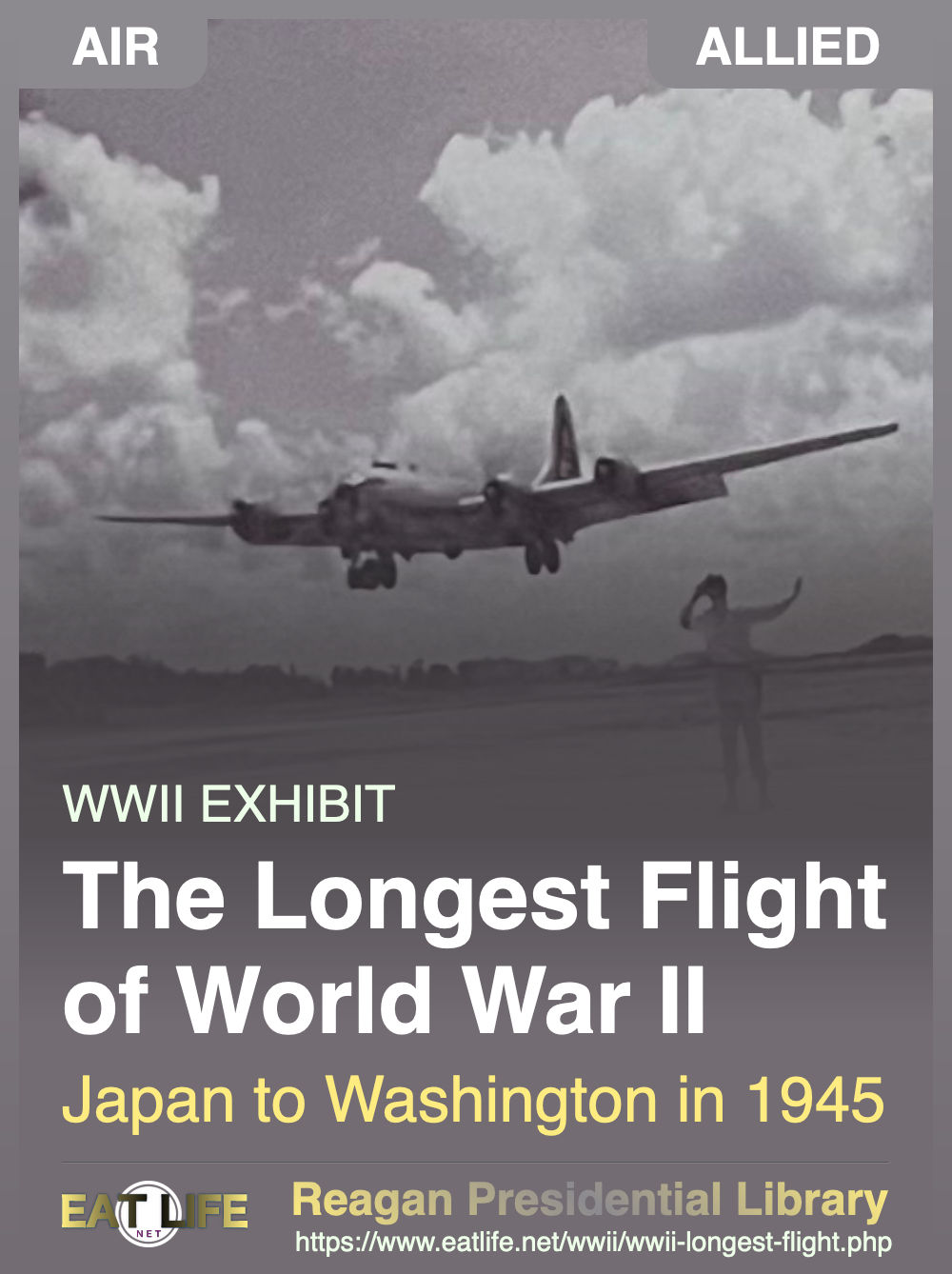
And the Beginnings of the Cold War
Major General Curtis E. LeMay, Chief of Staff of the Strategic Air Forces, was at the controls of one of three specially outfitted B-29s which were tasked with Flying from Japan to Washington. Even though they only reached Chicago, they established several records
When we took off at Hokkaido we had a little headwind and expected it. However, all our information indicated that once we passed Fairbanks it would drop. We didn't need a tail wind. All we needed was a nice normal wind to arrive on schedule. The buffeting headwind averaged 70 MPH".This trip proved a lot. The B-29 Superfortress went right from the drawing board into battle without any real test as to what it could or could not do. We found out that the B-29 can and will perform beautifully on long range trips, belligerent or otherwise.
The purpose of the flight was to see what might be expected of existing long range aircraft. The B-29 had gone into production with no service test. This was a service test.
- It was the longest non-stop flight in Air Force history.
- It was the first Grand Circle flight in history.
- It was the fastest non-stop flight of its distance in history.
- It was the first nonstop flight from Japan to the United States.
WIKIPEDIAThe 1945 Japan - Washington flight
The record-breaking air voyage made by three specially modified Boeing B-29 Superfortresses on September 18–19, 1945, from the northern Japanese island of Hokkaido to Chicago in the Midwestern United States, continuing to Washington, D.C. The flight was made by three United States Army Air Forces (USAAF) generals and other airmen returning to the United States from their overseas duty after World War II. At that date, it involved the heaviest load carried by an American aircraft (144,000 lbs), the longest nonstop flight made by the USAAF (5,840 miles), and the first nonstop flight from Japan to the United States made with a complete aircraft.Originally intending to fly 6,500 miles nonstop to Washington, D.C., the airmen encountered unexpected headwinds over Alaska Territory and Canada, and they predicted that two of the aircraft would not have enough fuel to take them the full distance. All three B-29s landed in Chicago instead, refueled, and continued to Washington, where each crewman was awarded the Distinguished Flying Cross, including the three pilots: Generals Barney M. Giles, Emmett O'Donnell Jr. and Curtis LeMay.
The Japan to Washington flight pioneered a route similar to that used by later airliners. The airmen synthesized a "great circle" (shortest distance on the surface of a globe) flight plan that used the jet stream as a tailwind to help them get farther with less fuel, though the tailwind was not absolutely required. Importantly for the airmen, America was able to demonstrate the reach of airpower in light of the nascent Cold War.
WIKIPEDIAThe Boeing B-29 Superfortress
American four-engined propeller-driven heavy bomber, designed by Boeing and flown primarily by the United States during World War II and the Korean War. Named in allusion to its predecessor, the B-17 Flying Fortress, the Superfortress was designed for high-altitude strategic bombing, but also excelled in low-altitude night incendiary bombing, and in dropping naval mines to blockade Japan. B-29s dropped the atomic bombs on Hiroshima and Nagasaki, the only aircraft ever to drop nuclear weapons in combat.One of the largest aircraft of World War II, the B-29 was designed with state-of-the-art technology, which included a pressurized cabin, dual-wheeled tricycle landing gear, and an analog computer-controlled fire-control system that allowed one gunner and a fire-control officer to direct four remote machine gun turrets. The $3 billion cost of design and production, far exceeding the $1.9 billion cost of the Manhattan Project, made the B-29 program the most expensive of the war. The B-29 remained in service in various roles throughout the 1950s, being retired in the early 1960s after 3,970 had been built. A few were also used as flying television transmitters by the Stratovision company. The Royal Air Force flew the B-29 with the service name Washington from 1950 to 1954 when the jet-powered Canberra entered service.








